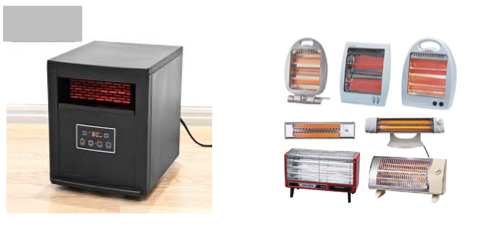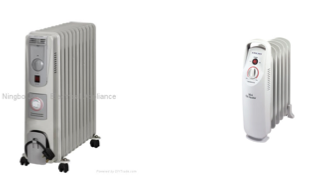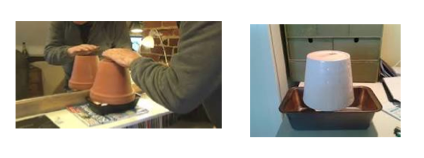By: Rick Schnurr, MV Julie May, Victoria Harbour
Over the past couple of months there have been two boat fires in Puget Sound marinas. Enough is enough! These fires are a great concern to all boaters, live aboards included. One fire on one boat can and often does lead to many boats in the marina being affected. This was certainly the case last weekend in La Conner, Washington, where 15 boats were damaged in the most recent fire.
The cause of the La Conner fire is not know at this time.
But, I want to weigh in with my own prejudice about using electric heaters on boats during the winter months. There are usually two groups of boaters using electric heaters. One group are the live aboard boaters, who, by definition, are aboard their boats and thus, monitoring the heater. The second group are those boaters who do not live aboard and are not monitoring the boat on a daily basis. This is the group that concerns me the most because if a problem is developing, no one is aware of it until flames and smoke are billowing from the boat. At this point all other boats in the marina are also in danger. If there are no live aboard boaters in the marina or if they are grouped in only one area, then there is even less of a chance that someone else will notice the problem as it is developing.
Now, my own personal prejudice concerning electric heaters is directed towards the type of heater employed. I am dead set against any type of electric heater that uses a glowing hot coil and fan to disperse the heat. Often these are known as QUARTZ HEATERS and FAN HEATERS. Both of these types of heaters employ an extremely hot coil and anything at all flammable that comes in contact with this heater is going to catch fire. Here are pictures of this type of heater:

These type of heaters are often chosen because they are inexpensive and it is possible to distribute a number of them around the boat. Also, remember that these heaters often draw 1500 watts of power. If your boat is plugged into 30 amps of shore power, then each one of these will be consuming half of your shore power. Two heaters will have your shore power cord pumping at max consumption (and heat) eventually frying the cord ends (if you’re lucky). If you’re not lucky they may result in a fire on the boat.
Boats that are left unattended for long periods of time over the winter are the most susceptible to problems. But, even if you are not living aboard, there is no need to put yours and everyone’s boat at risk by using QUARTZ HEATERS. There are safer ways to keep your boat warm and dry over the winter.
On Julie May we only use OIL FILLED HEATERS for warmth and dryness during the winter months. Yes, when the temperature drops below freezing we also use our diesel heater, but only when we are on board. Oil filled heaters come in a few configurations and use between 500 watts and 1500 watts (usually with three settings, 500,1000, 1500). We use two 500 watt heaters ( fore peak & galley) and one 1500 watt heater in the salon (set to 500 or 1000 watts MAX). If we are using any other electric appliances (cooking) then the salon heater is turned off. Here are pictures of oil filled heaters: a multiple setting 1500w and a 500 or 700 watt.

These heaters have no glowing hot coils and even if they are set too close to a bulkhead they will not burn it. I think you would have to carelessly allow something like fabric to fall over the heater to cause a problem. These oil filled heaters do a good job of keeping the boat warm and dry. They are just not as quick to heat the boat up from cold as a heater with a fan in it. While a fan/ coil heater heats the space by convection, the oil filled heater works by radiating its heat to warm the hull, bulkheads and furniture of the boat. These oil filled heaters are not much more expensive than the quartz variety. A 500 or 700 watt unit can be found for around $50.00, and a 1500 watt one will be about $80.00 to $100.00.
Here is another idea that an old salt, John Grant of Quadra Island, told me about. It is so simple. All it involves is a pie plate, a porcelain light socket, a 60watt light bulb, and a clay flower pot. Set the light socket in the pie plate with bulb installed and support a clay flower pot over it, set upside down. Turn on the light and you have a simple, safe and inexpensive heater that will keep your boat dry.
Here it is:

So for your and all of your neighbour’s safety, don’t use quartz heaters. Equip your boat with oil filled heaters (or flower pot heaters).

I have lived aboard my boat for ten years going on eleven in March. I also derive my living from the repair of boats ranging from small pleasure sailboats to multi million dollar yachts and commercial fishing boats. My observation on electrical fires is not isolated to heaters alone, more often than not issues developed at the shore power plug to boat location. I have repaired several over the most common to fail are Marino plugs. Shore power plugs also fail. My personal solution if practical is to eliminate the potential resistance by directly wiring the shore power cord to the a.c. 110 and construct a locker for the cord when the ship is underway. You can check for resistance at the ship shore connection by simply unplugging it noting either a brown or black tinge around one or more terminals if so replace the damaged plug… Enjoy a safe warm winter all. Greg
Thanks Greg.
What’s your take on the new Smart Plugs?
Rick, good article, thanks for sharing! For out of marina living many people up here on Cortes use wood stoves, although having a stash of dry wood can be a challenge. Forced air heaters are too power consumptive (like the Webasto in Papa Rumba), but it seems the passive oil drip systems are the way to go (i.e. Dickenson Newport). But back to in port living… we use a large dehumidifier along with a small oil filled heater. Removing the extra moisture substantially improves the air quality as well as the perception of cold.